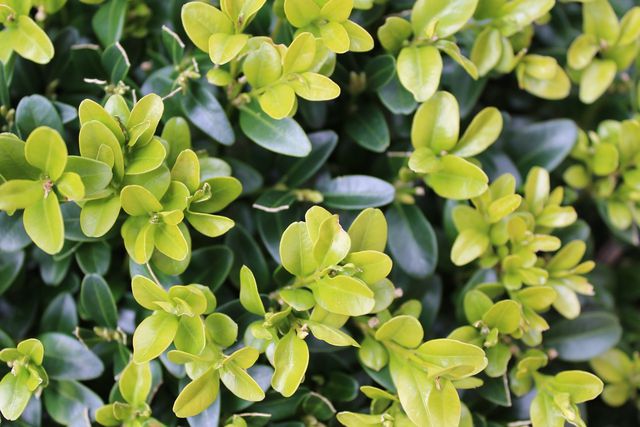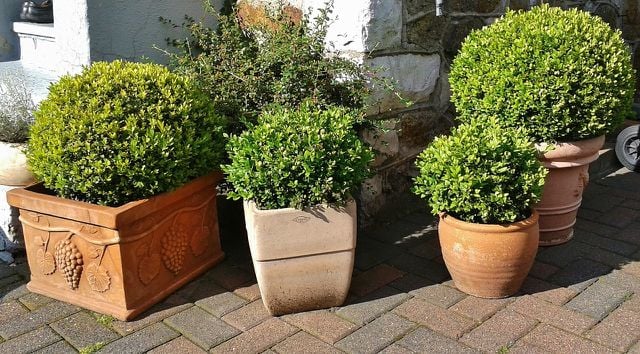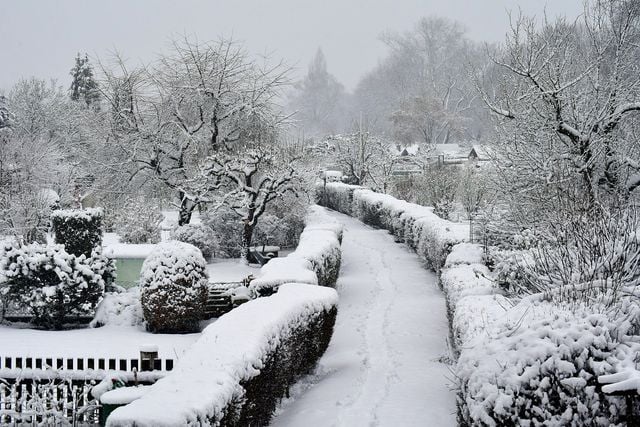We’ll show you how to prune and care for your boxwood to keep it healthy. This way you can enjoy its dense, green foliage in the summer.

The evergreen boxwood is one of the most popular ornamental and utility woods in Europe. The robust plant is ideal for greening fences, walls or bed borders. Thanks to its dense foliage, boxwood is easy to cut – into all imaginable shapes. For example, you can find it in pyramid and spherical shapes in numerous parks and castle grounds.
The boxwood originally comes from the Mediterranean region. Today there are around 60 different species, of which a good 50 are suitable for our latitudes. In Europe, you will mostly find the common boxwood (Buxus Sempervirens or European boxwood). You can buy it as a small shrub or tree. With good care and the right location, a boxwood can live up to 500 years.
Contents
Pruning boxwood: the right technique

The common boxwood grows slowly: you can expect ten to 15 centimeters per year. However, regular pruning will do your tree good and make its foliage grow denser and more robust. Prune your boxwoods twice a year. The rough pruning, in which you bring the tree into the desired shape, takes place in March or April. The second, lighter pruning should be done by the end of July.
When pruning your boxwood, keep the following in mind:
Choose a moderately warm day. It should not be too hot or too cold so that the freshly pruned plant does not have to exert too much energy.
Water the boxwoods thoroughly first. They will be easier to prune afterwards.
Use special boxwood shears or regular hedge shears to trim your boxwood. Make sure that the blades are always sharp. Smooth cuts will sprout better later.
Work with the shears from top to bottom, shortening the shoots that grow outside your desired shape. If you want to give your tree an unusual shape, you can buy special boxwood templates. Put them over your tree and cut back all the shoots around it.
After you have pruned back a boxwood, you should provide your little trees with some fertilizer. Some bark mulch will also do them good now.
Planting boxwood: the ideal location
If you want to plant a new boxwood, you should consider the following: Choose a suitable spot in your garden or on the balcony. Boxwoods thrive both in beds and in containers. Always make sure that the roots have enough space. Your tree will feel most comfortable if you take a few tips into account when choosing a location:
A partial shade to shady spot is ideal. The boxwood does not tolerate full sun. Therefore, make sure that it does not get too hot in the summer.
The location should be moderately windy to windless.
Plant your boxwood in neutral to calcareous, humus-rich and sandy loam soil. It is important that the soil is loose and permeable so that water does not accumulate. For the tub, use organic potted plant soil, for example from the organic market.
Your boxwood will adapt well to its location, but will need some time to do so. Your boxwood will therefore only tolerate a change of location in exceptional cases.
Planting boxwood: This is how it is done

The ideal time for planting your boxwood is in spring:
- First place your young boxwood plants with their roots in a bucket of fresh water.
- Then thoroughly loosen the soil and add some compost to the planting holes.
- Gently plant the young plants in the holes by hand or with a trowel.
- If you want to plant several boxwoods to form a hedge in the garden, you should now water the young bushes and then cut them back to about two thirds. They will then sprout more densely and gradually form an opaque hedge.
If you plant your boxwood in a container, it is up to you whether you want to let it sprout freely or cut it back for a denser growth.
Provide your freshly planted boxwoods with some organic fertilizer.
Tip: For the first few weeks after planting, water your boxwoods daily. They need a lot of water and the soil should never dry out completely.
Winter ready boxwoods: What you should bear in mind

The common European boxwood is very hardy and can withstand sub-zero temperatures. Normally, your plants do not need winter protection. However, make sure that you water your boxwood in a container regularly, even during the winter. Most plants die in winter due to dehydration, not cold. However, if temperatures stay well below zero for a long period of time, you should provide additional protection for your little tree:
For potted plants: Wrap the pot and root area of your plant with air-permeable coconut matting (e.g., at **Amazon), raffia or burlap. The material will keep the delicate root ball warm, which is especially true for boxwoods growing in winter.
You can also cover the roots of outdoor boxwoods. The free-standing bushes should also be regularly cleared of too much snow to prevent branch breakage.

